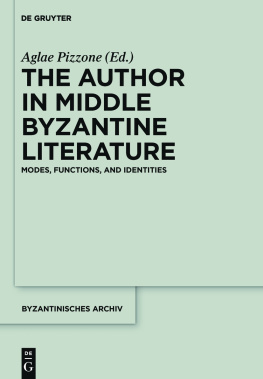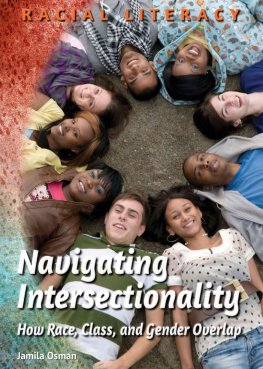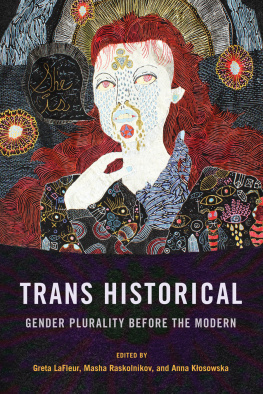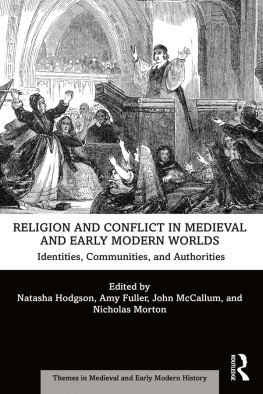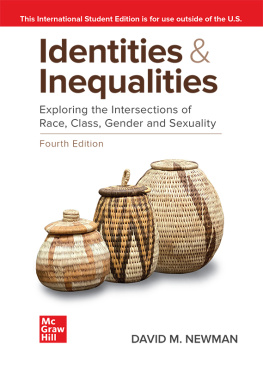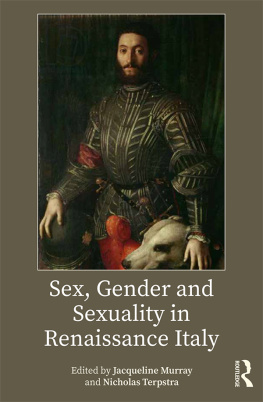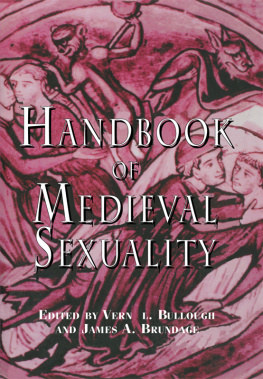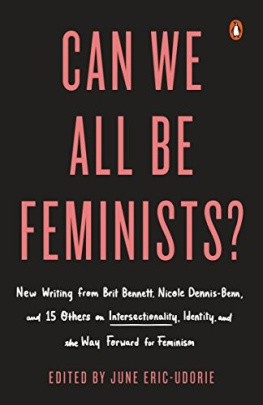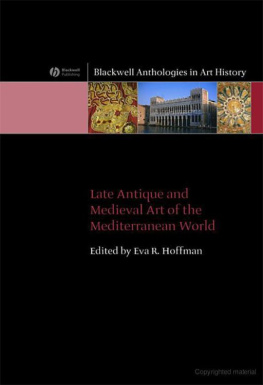Byzantine
Intersectionality
Sexuality, Gender, and Race
in the Middle Ages
ROLAND BETANCOURT
PRINCETON UNIVERSITY PRESS
Princeton and Oxford
Copyright 2020 by Princeton University Press
Requests for permission to reproduce material from this work
should be sent to .
Published by Princeton University Press,
41 William Street, Princeton, New Jersey 08540
In the United Kingdom: Princeton University Press,
6 Oxford Street, Woodstock, Oxfordshire OX20 1 TR
press.princeton.edu
Jacket illustrations: Details of ,
All Rights Reserved.
Library of Congress Cataloging-in-Publication Data
Names: Betancourt, Roland, author.
Title: Byzantine intersectionality : sexuality, gender, and race in the Middle Ages / Roland Betancourt.
Description: Princeton : Princeton University Press, [2020] |
Includes bibliographical references and index.
Identifiers: LCCN 2020010460 (print) | LCCN 2020010461 (ebook) |
ISBN 9780691179452 (hardcover : acid-free paper) |
ISBN 9780691210889 (ebook)
Version 1.0
Subjects: LCSH : Byzantine EmpireSocial life and customs. |
Intersectionality (Sociology)Byzantine Empire.
Classification: LCC DF 531 .B48 2020 (print) | LCC DF 531 (ebook) |
DDC 949.5/02dc23
LC record available at https://lccn.loc.gov/2020010460
LC ebook record available at https://lccn.loc.gov/2020010461
British Library Cataloging- in- Publication Data is available
Jacket design by Julie Allred.
For Dr. Christine Blasey Ford,
Anita Hill,
Monica Lewinsky,
Chelsea Manning,
Matthew Shepard, and
Marsha P. Johnson
I was branded as a tramp, tart, slut, whore, bimbo, and, of course, that woman When this happened to me seventeen years ago, there was no name for it. Now we call it cyberbullying and online harassment.
MONICA LEWINSKY
CONTENTS
xi
NOTE ON THE TEXT
When available, the author has opted to use the most accessible translations of texts, modified as necessary, rather than using their own translations. Likewise, rather than presenting the full original-language texts, relevant terms and phrases have been transliterated when deemed pertinent to the argument or for added critical nuance. These choices have been done both in keeping with the Presss preferred practices, as well as to enhance the texts readability without impinging on its critical use by both the expert and novice reader. References are provided for the editions of original-language texts, understanding that the majority of these are accessible via open-access resources or databases, such as the Thesaurus Linguae Graecae (TLG). In the rare instances where a text has been culled from an unpublished (or merely-digitized) manuscript, the full text is reproduced, transliterated.
Byzantine Intersectionality
Introduction
AT THE TURN OF THE SEVENTH CENTURY , an anonymous author from Palestine narrated the encounter of the monk Zosimas with the ascetic Mary of Egypt. In both these cases, Mary isolates herself simply to protect lustful men from sinningand, as the authors imply, to protect herself from being raped by them.
The Palestinian Life of Mary of Egypt, which would become the standard account, alters these narratives. Here, the departure is from her own promiscuous life, sparked by her miraculous conversion at the Holy Sepulcher. After this conversion and wishing to purge herself of her crazed desires for the most debased sex, Mary isolates herself. In other words, her life story shifts from that of a pious woman sacrificing herself in order to shelter and protect erring men to that of an exuberantly lustful woman from whom men need protection.
When Zosimas encountered her, Mary had already spent seventeen years in the Egyptian desert. Her figure was significantly altered by deprivation and the elements: the author describes her as a naked figure with short white hair, like that of an elderly man, and says that her body was black, as if tanned by the scorching of the sun. Then, the author has her narrate her past for the reader. Filling the text with lurid details, Mary voices her voracious lust, describes how she raped many men, and again stresses her complete bodily transformation through harsh ascetic practices.
What can the story of Mary of Egypt tell us about the ways in which gender, sexuality, and race were construed across Byzantium? My aim in this book is to look at how stories give us a glimpse into the intersectionality of identity in the medieval world, exploring how these various categories overlap with one anothernot as distinct identities but as enmeshed conditions that radically alter the lives of figures, both real and imagined. In this introduction, I open my investigation by tracing how these identities are at play with each other in the story of Mary of Egypt. Here, I focus on two main strands of intersection that permeate this book: first, nonnormative sexual practices and sexual consent; second, transmasculine gender presentation and constructions of race based on skin color. In the specific case of Mary of Egypt, we see a literary subject whose identity is not defined by any one of these factors alone but who embodies their intersectionality and the unique conditions of oppression and marginalization. Here, as I do in approaching other figures in this book, I treat Mary of Egypt both as an authors problematic construction and as a potential historical subject in order to give voice to subjectivities neatly purged and expunged from the historical record.
SEXUALITY + CONSENT
While Mary of Egypt is often described in the secondary and primary literature as a sex worker, that title can hardly be applied to the figure portrayed in the anonymous Life. Indeed, Mary explicitly rejects the label. As she tells Zosimas, I was a public temptation to licentiousness, not for payment, I swear, since I did not accept anything although men often wished to pay me. I simply contrived this so that I could seduce many more men, thus turning my lust into a free gift. Placing her beyond excuse for her actions, Mary is made to say that her deeds were justified by neither calamity nor poverty. The authors tactic here is consistently what we would describe today as slut-shaming: a rhetorical practice of criticizing a persons appearance, behavior, or both for failing to adhere to gender-based expectations about their sexuality. Usually deployed against women and queer men, slut-shaming targets a persons real or assumed sexual promiscuity (including premarital or casual sex) and their physical appearance (including attire, makeup, and bodily development). But the practice also relies on a host of other charges, such as accusing or humiliating a person for requesting or gaining access to birth control, engaging in sex work, or for being the victim of sexual assault. In all these regards, the Life of Mary effectively produces a character who is both a product and an example of slut-shaming.
In analyzing such stories, we can appreciate slut-shaming as more than just a practice enacted on a single person, group, or class of people. In art and rhetoric, it is a social practice used to generate tropes of women, real or imagined, that are thus cast as sluts. In the Greek-speaking Mediterranean where the author wrote Marys story, the most vicious and graphic example of this is the mid-sixth-century Secret History, the subject of this books . Written by the emperor Justinians historian, Procopius of Caesarea, the Secret History contains extensive and repeated attacks on empress Theodoras sexuality. In a text verging on the Byzantine equivalent to revenge pornography, Procopius criticizes and graphically illustrates Theodoras shameless behavior, sexual appetites, history of sex work, lower-class upbringing, and reliance on birth control, both contraceptive and abortive. In the



